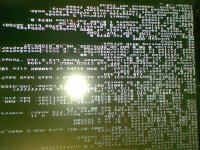Robbbert
Experienced Member
- Joined
- Jan 10, 2019
- Messages
- 447
This drive came with a bunch of Windows pcs from my former workplace in 2016. The Linux drive was by itself, not installed in any machine. I plugged it into one of my many spare Compaq EN series (C500) chassis, it produced a wall of text then wanted me to log in. So I went online and found out how to bypass that, so now I get a prompt. Since then, the drive has sat at the back of the cupboard, unused.
But now, although I have no interest in Linux, I'd like to know what flavour is installed, and how to find out if there's any use in keeping it. It would be nice if I could get it onto the network, should that be possible.
So, just now I have plugged the HD into another C500, it booted up as before, and is sitting at a prompt. It says
(none):/#
So, question 1: How do I find out what flavour and version this is?
Question 2: How do I find out if it can be used for anything useful?
Question 3: How do I get it onto my local network. Machine has a Intel E100B PCI card.
I don't know anything about Linux, so you'll have to hold my hand through the process. I don't know what shell it's in, or how to use vi (or even if it's there).
The VGA video and PS2 keyboard are working. There's a PS2 mouse plugged in, and it has 512MB of RAM. The CPU is a 500MHz Mendicino. It is capable of running all versions of Windows up to W2K.
But now, although I have no interest in Linux, I'd like to know what flavour is installed, and how to find out if there's any use in keeping it. It would be nice if I could get it onto the network, should that be possible.
So, just now I have plugged the HD into another C500, it booted up as before, and is sitting at a prompt. It says
(none):/#
So, question 1: How do I find out what flavour and version this is?
Question 2: How do I find out if it can be used for anything useful?
Question 3: How do I get it onto my local network. Machine has a Intel E100B PCI card.
I don't know anything about Linux, so you'll have to hold my hand through the process. I don't know what shell it's in, or how to use vi (or even if it's there).
The VGA video and PS2 keyboard are working. There's a PS2 mouse plugged in, and it has 512MB of RAM. The CPU is a 500MHz Mendicino. It is capable of running all versions of Windows up to W2K.


